For many decades, it was not uncommon for a player to play his entire NHL career in one place. Since 1995, it has become improbable for all but a select few per generation. The idea itself is less business than romance; an obvious reason it’s certainly seen less today than even a decade or two ago. A player whose career essentially begins with a franchise’s beginning is relatively unheard of in this modern era of sports. For this reason, Mikko Koivu is the closest thing to a living history of the Minnesota Wild in existence.
In the Beginning
The Wild were founded in 1997, with their inaugural season slated for the 2000-01 campaign. Thus, hockey was being brought back to Minnesota, thanks in part to St. Paul mayor and future senator, Norm Coleman, and Minnesota businessman, Bob Naegele, Jr. The “State of Hockey” was riddled with anticipation as they waited for a team of their own once more, following the Minnesota North Stars departure for Dallas in 1993.
The 2000 Expansion and Entry Draft, held in succession from June 23-25 held hopes of promise for the Wild as well as the other expansion team, the Columbus Blue Jackets. With Minnesota having picked veterans like goaltender Jamie McLennan, defenseman Sean O’Donnell, centre Jim Dowd and left-winger Scott Pellerin, alongside third-overall pick, right-winger Marian Gaborik, the future looked bright for the Wild.
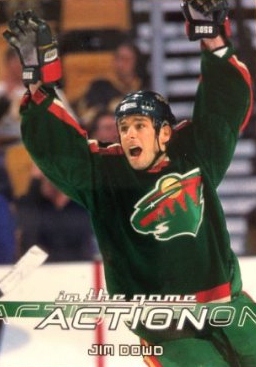
The cities of St. Paul and Minneapolis were electric, ecstatic and confident as that feeling permeated the entire state as well. Expansion teams rarely play well immediately, with the Vegas Golden Knights the “golden” exception, of course. Still, hope existed that the return of hockey to its rightful American home would not disappoint.
Into the Wild
The Wild’s 2000-01 campaign certainly disappointed any expectation greater than dismal. With a record of 25-39-13-5, good for 68 points (second-to-last in the entire NHL), the team saw they had work to do. Giving up 206 goals while scoring only 168 suggested all positions needed renovation after only their first season.
The management had to reinforce the Wild with scoring, having had three players tie for the goal lead with 18, including the rookie Gaborik. Those 168 goals were not enough moving forward in that era or the ones that followed. They needed not only offensive skill but a big-bodied soul with defensive ability as well.
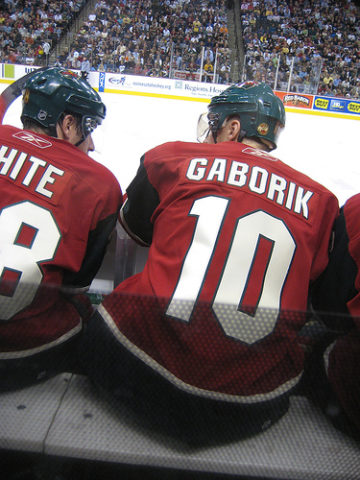
Moreover, they needed someone who loved hockey, who understood Minnesota’s passion for hockey and playing the game correctly. Building a team takes time, patience, consistency in drafting and in free agent acquisitions. In their first year they had failed poorly, but in doing so had earned the sixth selection in that year’s draft. They had to make certain that that draft equity was put to proper use, for the greatest possible impact of the team moving forward.
The 6th Pick in the 2001 Draft & the 2002-03 Season
The Wild took Finnish center Mikko Koivu with the sixth pickin the 2001 draft. At only 18 years old, and with a year of experience playing at TPS in the Finnish Elite League under his belt, he still had some maturing to accomplish before he was to be ready for the AHL or NHL. Koivu played with TPS for another three seasons before spending his 2004-05 campaign playing for the Wild’s then-AHL affiliate, the Houston Aeros.
During this time, the Wild found themselves one series away from the Stanley Cup Final. After a strong 2002-03 season in which they finished third in the Northwest Division, the Wild defeated the Colorado Avalanche in seven games in the Conference Quarterfinals. They followed that by defeating the Vancouver Canucks in seven games in the Conference Semifinals, before being swept by the Mighty Ducks of Anaheim in the Western Conference Final.
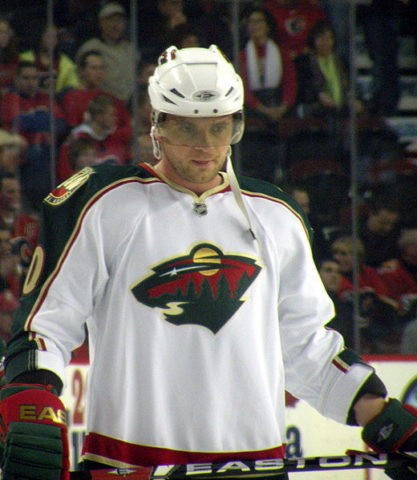
The 2003-04 campaign was a return to previous standards of play, missing the playoffs with 83 points and a fifth-place divisional finish. The deep playoff run of the previous season was an anomaly, not a new consistency; that would take more players and more time to finally manifest.
The 2004-05 season coincided with the NHL work stoppage, meaning that any NHL debut would be delayed until the next season. Few could’ve guessed moving past the canceled season that the 2003-04 season was the last without Koivu in a Wild sweater for nearly two decades.
Koivu’s Era Begins
Koivu’s rookie season of 2005-06, the first of his 14 NHL seasons (at the time of this article) saw him tally 21 points. The Wild, meanwhile, didn’t make the Stanley Cup playoffs once again after a fifth-place Northwest division finish. Disappointment abound after the fourth such season in five full campaigns in the league; still, the season overall could be seen as a stepping stone moving forward.
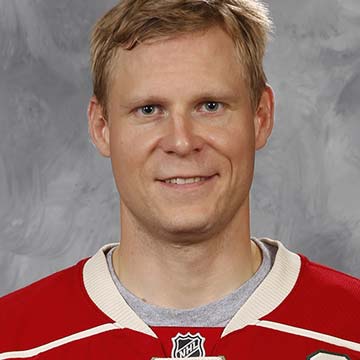
The Wild won eight more games in 2005-06 than in the prior campaign of 2003-04, and and that they were still waiting for much of their young talent from the various drafts to further mature grants the year further perspective. Finishing with 84 points after a canceled NHL season is a step forward for a young team who managed 83 the season prior, and adapting players old and young to the rule changes that came out of the 2004-05 NHL lockout took all teams some time to adjust. Reconciling budding youths, varying styles and abilities to the revised game is the story of the 2005-06 season.
Meanwhile, at still only 22-years-of-age, Koivu’s rookie season was his lowest point tally for any NHL season throughout the rest of his career (at the time of this article). It speaks to the level of play he has consistently sustained for the Wild over the subsequent campaigns, as much as to how he and the rest of the league settled into the new rules as the following campaigns would unfold.
A Momentary Glimmer
While the Wild only made the playoffs once in their first five full seasons of existence, some tread was being found. The following campaigns of 2006-07 and 2007-08 saw the Wild in second and first place in the Northwest Division, respectively. Koivu helped in driving that proverbial train with 54 and 42 points, respectively, for the club. The Wild lost in the Conference Quarterfinals of both playoffs; to the Ducks, 1-4, followed by the Colorado Avalanche, 2-4.
Koivu’s first three seasons were productive, as were those of his team, relatively speaking. The team won its first division crown in 2007-08 with playoff runs in two out of three years following only one playoff appearance during the clubs initial four seasons. This felt like a step towards consistent contention for the club, of the start of a good run for a team with a wonderful mixture of youth and experience.
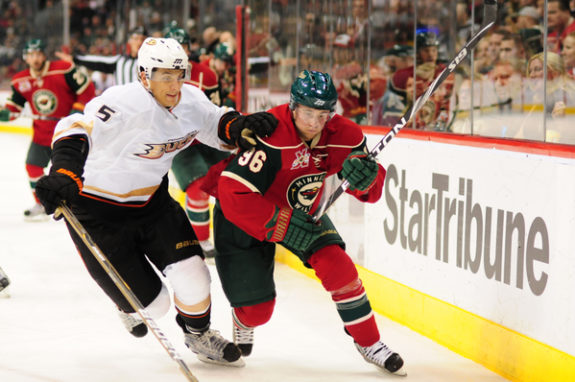
Passion, youth and skill like Koivu, Gaborik, centre Pierre-Marc Bouchard and defenseman Nick Schultz looked to continue to improve alongside older players like goaltender Niklas Bäckström and forwards Pavol Demitra and Brian Rolston, to dominate teams on the ice for the foreseeable future. The next three years would tell a much different story.
A Wild Turn of Events
The following four seasons were certainly a downturn for the Wild, while the play of Koivu continued accelerating upwards. Playoff contention slipped from their fingers for the next four seasons, Gaborik signed with the New York Rangers as a free agent in 2009 and age overcame experience for many of the Wild’s other veteran leaders.
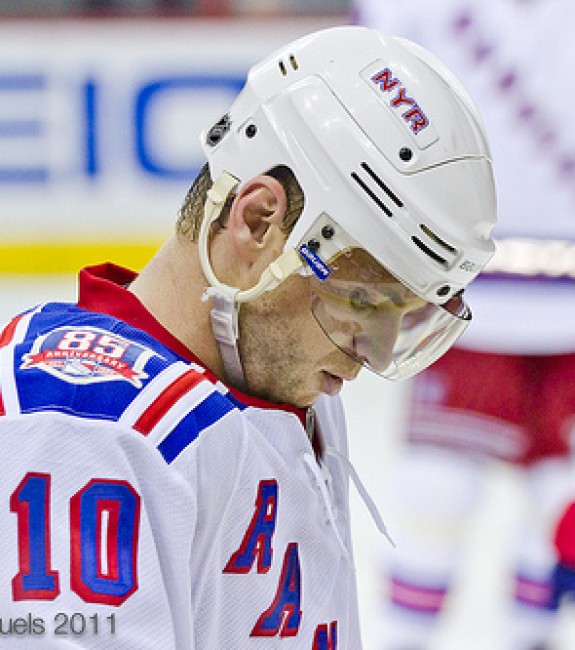
The Wild would alternate third and fourth place divisional finishes from 2008-09 to 2011-12, with 89, 84, 86, and 81 points. The goaltending and scoring would each betray Minnesota during this stretch, as only 2008-09 had a positive goal differential, and by 2011-12, that fell to minus-49. That wasn’t for lack of effort by Koivu, however.
Koivu went off during these seasons. He put up 67 points in the 2008-09 season, yet his 2009-10 season was even more successful. He was named the team’s first permanent captain, and he repaid that honor by reaching 71 points during that campaign, followed by 62 points in the 2010-11 season. Playing in his lowest number of games as an NHL professional, 2011-12 saw Koivu play only 55 games while still managing 44 points over that time.
Despite his personal success, the team was again as hopeless as when he was drafted as an 18-year-old Finnish boy after the team’s inaugural campaign. As the shadow of a lockout, canceled or shortened season loomed large over the NHL for the 2012-13 season, the shadow over the Wild had already enveloped the “State of Hockey”; something had to change.
A Wild Rebirth
The 2012-13 NHL campaign began on Jan. 19, 2013, three months after it usually commenced. Many of the NHL’s better players filled their time in other leagues, over 100 in total. New York Islanders defenseman Lubomir Visnovsky even reported to the Islanders from Europe two weeks after the season began, incurring a suspension for doing so.
Koivu had gone back to his old club TPS in the Finnish Elite League during the lockout. During the 10 games in which he played with the club, he stayed sharp for his NHL return. He collected 10 points in those games, a sneak peek at what the NHL season could eventually expect from him.
With 48 games to play, a condensed NHL season meant a relative condensing of everything else as well. Koivu played all 48 games, good for 37 points over that campaign. The Wild came in second place with 55 points, good for a spot in the playoffs. That playoff run was short-lived, suffering elimination by the eventual Stanley Cup champion Chicago Blackhawks in the first round.
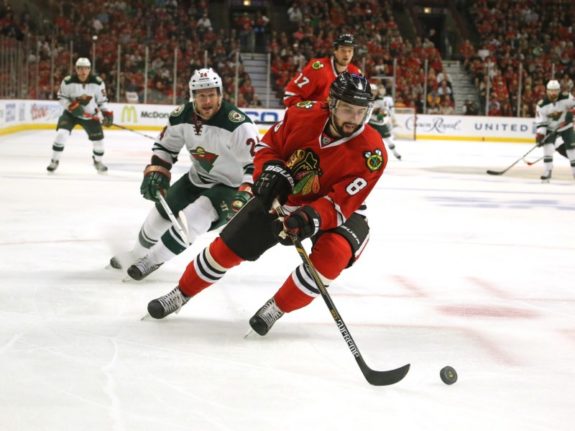
That lockout-shortened season of 2012-13 was the first of six consecutive playoff appearances for the Wild, a club record to date. The Northwest Division became the Central Division in 2013-14, and while the Wild didn’t win the division during the upcoming six seasons, they were a force in the Western Conference all the same. Koivu would be at the helm of this progress, as he had been for nearly a decade already.
Koivu’s 2013-14 season was only 65 games long, but he made the most of his time on the ice. His 54 points in 65 games were no small feat and that would aid the Wild in their fourth place, 98-point finish in the new Central Division, earning a trip to the playoffs for the second straight season. The resulting run saw the Avalanche defeated in seven games of the first round before the Wild lost to the Blackhawks for the second consecutive postseason, this time in six games.
The 2014-15 season was filled with promise as the Wild finished fourth place again, this time with 100 points. Koivu’s production sagged in this season, despite this growing team success. While playing 80 games he was only able to achieve 48 points – one of his lesser productive campaigns. In the playoffs, a first-round victory over the St. Louis Blues in six games was quickly erased from memory by the third consecutive defeat by the hand of the Blackhawks, this time in a clean sweep.
The following season saw the Wild only achieve 87 points, good enough for a playoff run finished by the Dallas Stars in six games of first-round play. The next two seasons saw the Wild rebound, good for second in the division with 106 points and third with 101 points, respectively. After deeper playoff runs and some hard-fought series, the Wild could not even win more than a game each of these series, falling to the Blues and Winnipeg Jets in turn.
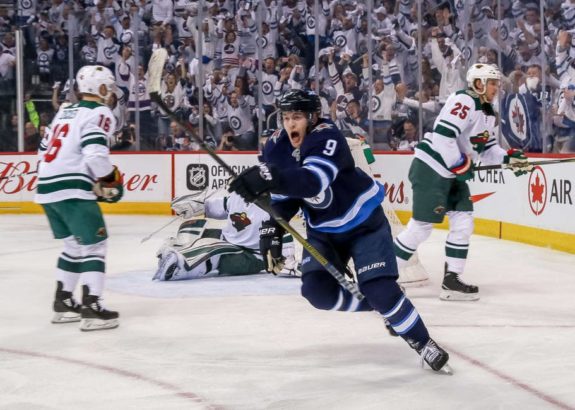
Koivu’s three seasons starting from 2015-16 featured 56, 58, and then just 48 points. Entering his mid-30s, the signs of slowing down certainly appeared more noticeable than ever had they previously; while still effective, he was not the dominating force he had once been.
As Koivu had aged, his playmaking skills certainly kept him an important and integral piece to the offensive side of the ice. His assist totals have remained impressive over his long career but statistics alone are inadequate in painting the entire picture. His defensive intelligence, what his presence has meant to the team’s psyche year in and out, and how he has helped to develop a growing hockey culture in the State of Hockey are all far greater contributions than the Wild could have envisioned Koivu capable of providing the team with when he was drafted. To this point, his playmaking, point collecting and locker room leadership have affected the Wild in a greater way than any other player in the club’s history had by the start of the 2018-19 season, his 18th professional season since being drafted.
All Things Come to an End
The 2018-19 season was as dismal for the Wild as for the player of focus. Koivu played only 48 games before suffering a season-ending torn ACL. His fewest games played in a professional season since his last full year in the Finnish Elite League in 2003-04 saw him accumulate the fewest points, 29, since his rookie season total of 21 in 2004-05.

The Wild were as unfortunate, finishing in seventh place in the Central, missing the playoffs for the first time in six seasons while attaining the fewest points during a full season since the 2011-12 season. Youth was key to rejuvenating the team moving forward like it had been when the Wild first drafted centre Koivu in the 2001 Draft.
Coming off of a serious knee injury and approaching 37 years old, nothing is certain for Koivu as a future in which he will not be able to play is rapidly moving towards reality. His role will remain important as an intelligent veteran, and his productivity should remain relatively high assuming he continues to receive young weapons to distribute the puck to. Both predictions assume he can return at a high level and maintain his health, neither a guarantee for a player in the advanced stages of a long career.
Young offensive talent like Matthew Boldy, Victor Rask, Kevin Fiala, Joel Erikkson Ek, Jordan Greenway, Luke Kunin and Vladislav Firstov could very well extend Koivu’s own productivity by years thanks to their speed, skill, talent and passion. Alongside reliable names like Jason Zucker, Zach Parise, Eric Staal and now Mats Zuccarello, both Koivu and the Wild as a team can bounce back from a very down year in 2018-19.
Koivu has spent his entire NHL career as a member of the Wild, drafted 18 years ago. In today’s NHL, that is less common than ever before. While the Wild have not always succeeded with him as a focal player, Koivu has never given anything but his all to the team, city and state. Apart from the four rebuilding years that marked the middle of his career, he brought the Wild to the playoffs in eight of ten other NHL campaigns. The history of the Wild is linked to Koivu’s own, and there are few players in the history of any sport who one can say that about.